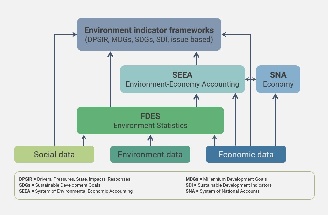- Created by Piyapat Nakornchai, last modified on May 18, 2022
This space contains links to the activities and tools ESCAP has used to strengthen environment statistics in Asia and the Pacific. It also contains a collection of outputs from these activities.
One of the purposes of the self-learning materials is to provide background to reading the guidance documents. Another purpose is to provide insights into policy applications and data sources.
Overview and applications: contains overview presentations, the Diagnostic Tool and the Inventory Template.
- FDES: presentations on the components of the FDES
- SEEA-CF: Components of the SEEA Central Framework. Note that not all components in the manual have related training modules.
- SEEA-EEA: Components of the SEEA Experimental Ecosystem Accounting
- SEEA-AFF: Components of the SEEA for Agriculture, Forestry and Fisheries
- Regional Ocean Accounts Platform
- SEEA and Climate Change
Background of Environment Statistics
In recent years, the United Nations Statistical Commission has overseen major new developments related to statistics on the environment and agriculture, including: revision of the Framework for the Development of Environment Statistics (FDES 2013), revision of the System of-Environmental-Economic Accounting (SEEA 2012), adoption of International Recommendations for Energy Statistics (IRES 2011), adoption of International Recommendations for Water Statistics (IRWS 2010) and adoption of the Global Strategy to improve Agricultural and Rural statistics (2009).
The Global Strategy to improve Agricultural and Rural Statistics was utilised to develop a regional implementation plan for Asia and the Pacific, which was endorsed by the ESCAP Committee on Statistics in 2012.
The ESCAP Committee on Statistics in 2012 also endorsed the further development of a regional strategy for improvement of environment statistics. A primary objective for this area of work will be to provide assistance to governments in Asia and the Pacific with implementation of the current agreed international standards and recommendations.
Decisions about development investments that are intended to foster agricultural growth need to be based on sound information about land use, natural factors affecting agricultural production, and the prevailing economic and social situations that producers face, and the interaction of these issues with climate change.

Pages
Recently updated articles
Search
Browse by topic